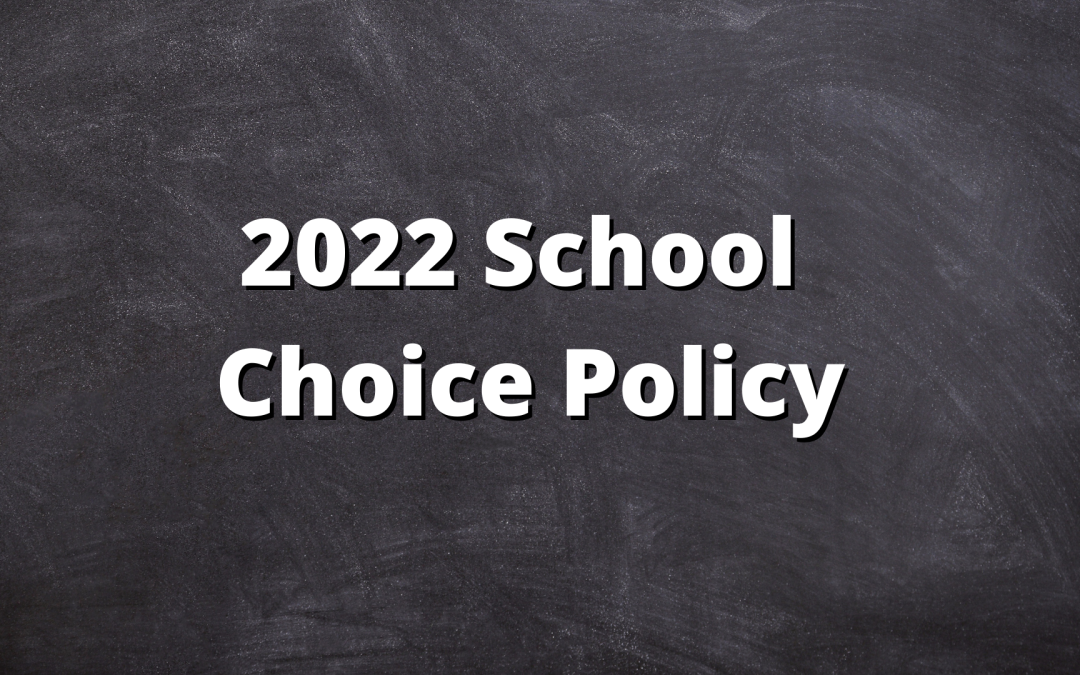January 23-29 was National School Choice Week 2022. Parents across the U.S. were given specific opportunities to learn what school choice means, check out the options in their state, learn about the various types of schools available to their children and access additional resources to help their child more successfully deal with virtual and/or hybrid learning during the continuing COVID pandemic.
WHAT IS SCHOOL CHOICE?
The informational website https://schoolchoiceweek.com/ defines school choice as “the process of allowing every family to choose the K-12 educational options that best fit their children. Every child is unique, and all children learn differently. Some children might succeed at the neighborhood public school, while others might fit in better at a charter, magnet, online, private or home learning environment.”
Proponents of School Choice believe it is important that K to 12 students have the opportunity to learn in the environment best suited to their own learning style. There are currently six basic options for parents and students to consider (in alphabetical order):
- 1. Home School – Parents choose to withdraw their child or children from the public school system and educate them at home. Each state details specific regulations and accountability requirements for home schooling in their jurisdiction. For a state-by-state summary of home school laws, visit www.homeschoolfacts.com . (Goto https://globalstudentnetwork.com/ for an excellent source of homeschool curriculum options.)
- 2. Online School –Traditionally, this option is an excellent choice for kids who have demonstrated difficulty in adjusting to the traditional brick-and-mortar education model. The difference between homeschool and online school is that online school generally provides access to state-certified teachers and can also link students directly to school staff for additional help when needed. (NOTE: The term “Online School” is sometimes used interchangeably with “virtual school.”)
- 3. Private Schools (including online private schools) – Private, or independent, schools are privately owned and funded without the assistance of local, state, or federal governments. At private schools, students pay tuition to attend. In contrast, public K-12 schools are entirely supported with taxpayer dollars and cost nothing additional to the student or parent. (For an excellent, fully accredited, private, online K to 12 education experience, visit International Virtual Learning Academy at https://internationalvla.com/about-online-learning-at-ivla/.)
- 4. Public Magnet Schools – Author Allen Grove, writing for www.ThoughtCo.com on March 1, 2021, said “Magnet schools are public schools that have specialized curricula in areas such as the sciences, arts, leadership, or languages. Students often choose magnet schools so that they can challenge themselves in fields that appeal to their interests. The term “magnet,” in fact, refers to this idea of attraction. Students are drawn to a magnet school because of its academic focus.”
- 5. Public School – The Free Dictionary (https://www.thefreedictionary.com/public+school ) defines public school as “an elementary or secondary school in the United States supported by public funds and providing free education for children of a community or district.” The term “free” is somewhat misleading in that U.S. public schools are totally supported by taxpayer dollars, paid by residents in the form of federal, state and local taxes. Additionally, parents end up paying an average of $1300/year per child enrolled in public schools. This $1300 in additional costs usually come from the cost of field trips, incidental supplies, fees for participation on sports teams, clubs, etc. Some of the fees are voluntary, others are not. (https://www.abc.net.au/news/2019-03-20/parents-pitch-in-for-the-high-cost-of-public-schooling/10917358.)
- 6. Virtual School – The Tech and Science Dictionary defines Virtual School as “an educational program that takes place in a virtual environment—most typically on a computer screen rather than in person. Virtual School can also refer to a specific school that provides instruction using such programs, as in My daughter attends a virtual school.” (https://www.dictionary.com/e/tech-science/virtual-school/#:~:text=Virtual%20school%20refers%20to%20an%20educational%20program%20that,as%20in%20My%20daughter%20attends%20a%20virtual%20school. )
WHY DOES SCHOOL CHOICE MATTER?
The basic idea behind school choice is that a portion of the tax dollars parents pay for U.S. public education, goes back to them through a number of avenues, including school vouchers (available in some states), Educational Savings Accounts (generally a federal tax option) and sometimes via tax credits. Paired with the choice of school option (see above descriptions), parents are given the opportunity to “shop” for the best educational opportunities available to their children.
But school choice is not available in all states. As of June 2020, nearly half of the states in the U.S. still did not allow for some form of school choice.
Proponents of school choice include the American Center for Law and Justice (ACLJ at www.aclj.org ) whose work includes “drafting model state legislation to ensure that every child has equality of opportunity in education, including school vouchers.” The ACLJ has also filed Supreme Court briefs focused on defending state school choice laws to equally apply to religious education.
Anti-school choice activists often claim that offering so many options to parents undermines the purpose of public schools – providing equal opportunity K to 12 education to all children, regardless of race, gender, religion, or economic status. The concept is that all the energy that is going into building, naming, and analyzing other school options should be channeled into strengthening the basic schools that the government already provides.
IS SCHOOL CHOICE THE END OF PUBLIC SCHOOLS?
EdAdvocate writer Matthew Lynch thinks public schools and school choice are intended to exist in the same educational spectrum: “So can public schools thrive in a school choice environment? I think so, yes. Options like charter, magnet, private, online and homeschool curricula are not meant to undermine the nation’s public schools but to build them up through shared quality standards. There is room for all choices in K-12 schools and students benefit from the options.” (https://www.theedadvocate.org/is-school-choice-an-anti-public-school-sentiment/)
STATE-BY-STATE OPPORTUNITIES
The National School Choice Week website provides an interactive map that shows state-by-state school choice information where you can discover more about the available school choice options in your state. You can find the map at https://schoolchoiceweek.com/mystate/.
